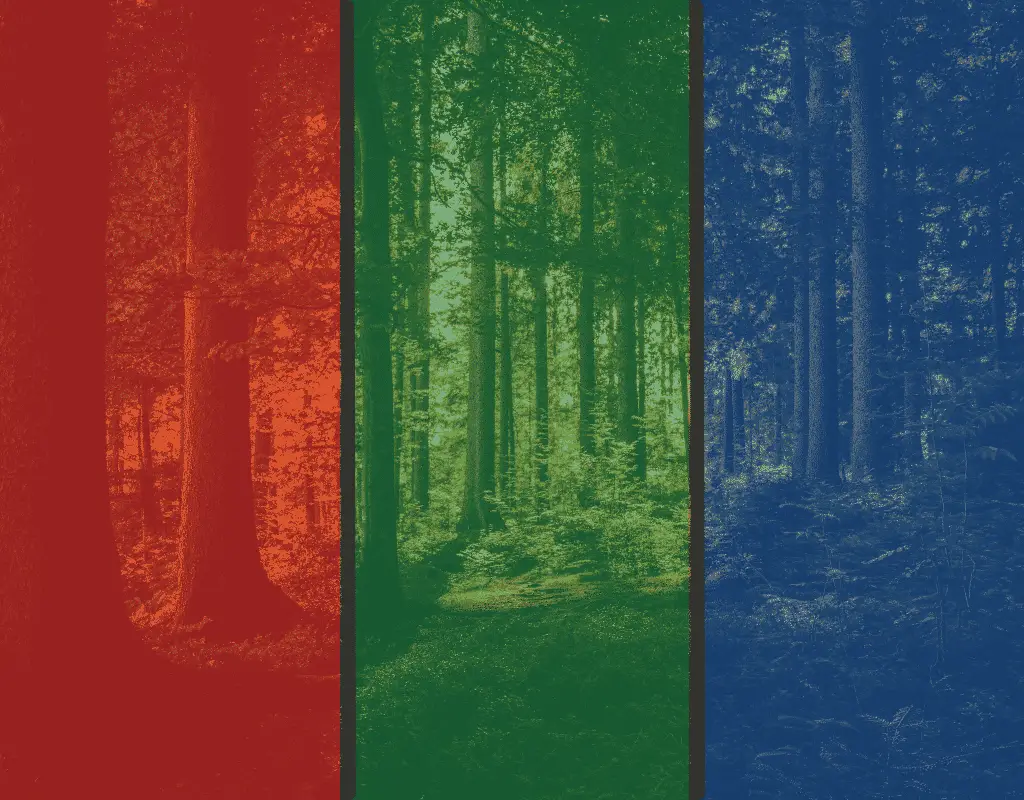Going from a bright white light to pure darkness can be jarring. Bright white light causes your pupils to constrict blocking out light and it takes time for them to expand (aka dilate) once you shut off the light. This leads to limited night vision while your body responds to the change of light. Thankfully, there are different colored lights that help preserve night vision when transitioning from light to dark (and vice versa).
What color light won’t ruin night vision? Red lights are the best option for preserving night vision, but green lights also help with a few added benefits (I’ll explain below). Using a red/green light in the dark slows down the constriction of your pupil, which helps delay your loss of night vision. You won’t have the same jarring effect that you would get from transitioning from bright white light to total darkness.
You can use a red light in most situations, but there are times where it’s better to use green or blue lights. In the rest of this post I’ll explain why red lights are best for preserving night vision, and explain when it’s better to use green, blue, or white lights.
What Color Light Is Best For Preserving Night Vision?
When it comes to preserving night vision there are two main choices to choose from. Red lights are best for preserving night vision, but it will be harder to make out fine details in the dark. Green light is just behind behind red when it comes to preserving night vision, but it’s better for improving clarity and contrast.
So now that you know that reds the best for preserving night vision and green helps with contrast/clarity, lets talk about all of the advantages/disadvantages of different colored lights. Here’s a brief rundown of each color of light ranked from the best to the worst.
- Red Light (Best): Red light is by far the best color when it comes to preserving night vision. When you look at the visible light spectrum you can see red has the highest wavelength so it needs the most amount of light to become visible. Your eye uses cones to see in bright lights and rods to see in the dark. The color red is too bright for the rods in your eyes to see so it’s only picked up by the cones. This leaves your eye’s rods, which are used to see in the dark, unaffected by the red light. Proteins in your eye also come into play, but I won’t get into that.
- Green Light (Great): Green light falls just behind red when it comes to preserving night vision, but there’s a major benefit to using a green light in the dark. Green falls exactly in the middle of the color spectrum so it’s the easiest color to see at night. There will be increased contrast/clarity when using a green light. That’s why most night vision goggles use a green bulb instead of red. It’s easier to read/see close up and you can easily spot the outlines of animals/humans and other objects from a distance.
- Blue Light (Acceptable): Blue lights are a little bit better than white when it comes to night vision, but there will still be a noticeable transition as you shut off a blue light. The main reason people use blue lights at night is to pick up blood trails, spot bodily fluids(saliva, sweat, urine, semen, etc.), find oil and fluid leaks, and fisherman use blue lights to spot and lure in fish. Blue lights also give you brighter light output since it’s closer to the white color spectrum.
- White Light (Worst): There’s a reason why the vast majority of flashlights, headlamps, and light bulbs use a white light. Using a white light is the closest you can get to having natural daylight. White lights are great for general use, but it can be jarring transitioning from bright white light to total darkness. It takes a long time for your eyes to adjust to the change of light leaving you with terrible night vision.
Before I explain why it’s better to use a red light we need to take a quick minute to explain the visible light spectrum. I’m sorry for the boring science talk, but that’s the only way to explain why red lights don’t affect your night vision.
The Visible Light Spectrum Explains Why Red Lights Preserve Night Vision
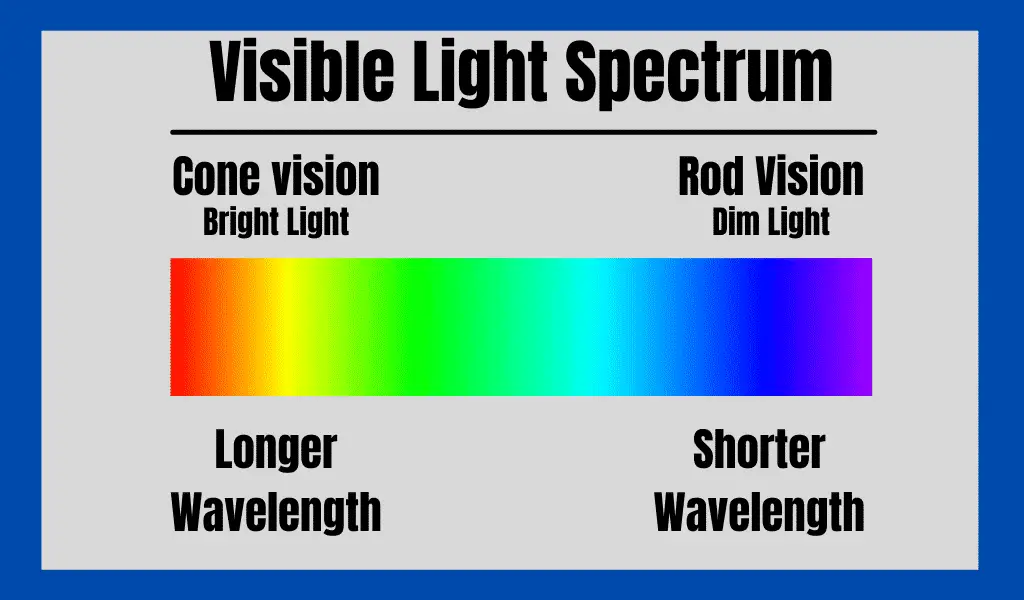
The only way to explain why red light is better in the dark is to look at the visible light spectrum. I’ll try to simplify my explanation and promise to keep the science talk to a minimum!
Red has a longer wavelength than any other color. The waves are spread out farther so it takes more light to see the color red. As you get over into the blues/purple side of the visible light spectrum it has a shorter wavelength, which means that waves are packed together so you need less light to be visible.
Our eyes have light sensitive cells called rods and cones to regulate light and interpret color. The cones are like a high definition camera that interprets light, color, and definition and rods are like an old school black and white tv. Cones do the heavy lifting during the day and the rods go into overdrive to increase night vision in the dark.
We use the cones during the day to deal with bright light and the rods for dim light (twilight/night) vision. You don’t use the rods during the day since they’re saturated by light, but at night the rods deal with most of the light and cones to interpret color (and some light).
Red lights have the longest wavelength so they require more light to be visible to the human eye. The red wavelength is higher than rods can interpret so they’re completely blind to it. So we can only see the red light with the cones in our eye, which leaves the rods unaffected by the light therefore preserving night vision.
When And Why Do You Use Red Light In The Dark?
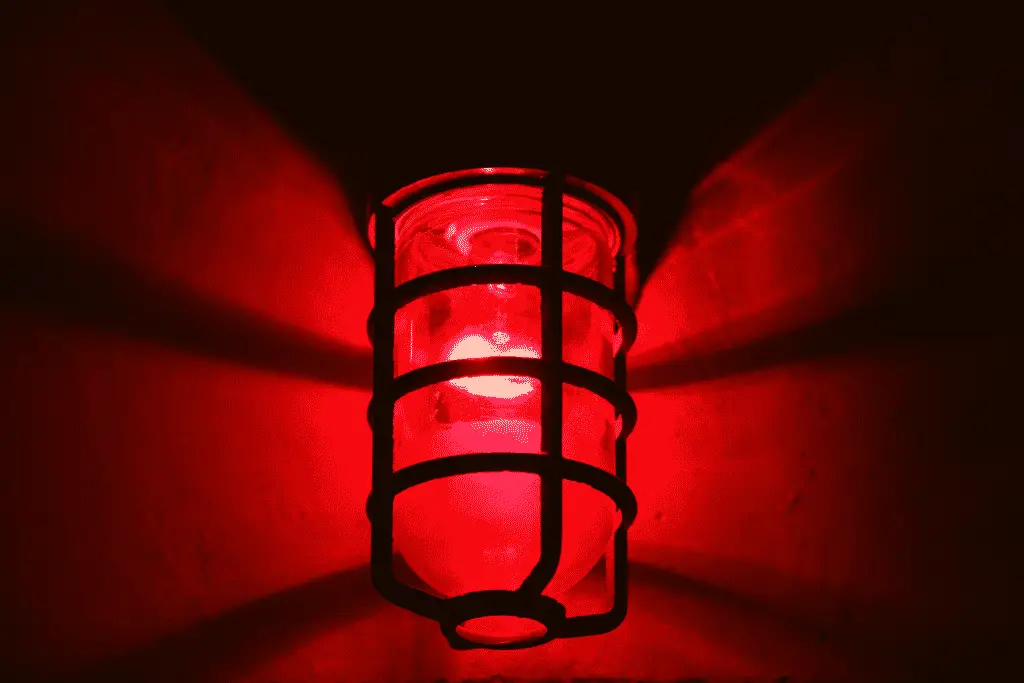
The visible light spectrum in the previous section explains why red lights won’t effect night vision, but it’s not always better to use a red light. Red lights are great for low skill tasks like walking through the woods at night, but you will have a hard time seeing detail/contrast in low light.
Red light has a long wavelength so it’s the hardest color to see in dim light. The light is only being interpreted by your cones which need a lot of light to properly focus. So using a red light won’t affect your night vision, but it will be harder for your eyes to see fine details.
That’s why we use red lights on all of our emergency lights in buildings. You don’t need a lot of detail to walk through a dark hallway lit up by an emergency sign, but you do need to maintain night vision until you’re outside. You need to be able to go from lit up rooms into darker hallways without affecting your night vision.
Don’t use a red light if you need to perform a task that requires attention to detail and increased closeup/distant visibility. Red lights are fine to use at moderate distance up to 30 meters, but you’ll have a hard time spotting outlines at greater distances. Trying to read with a red light is just as bad since the edges blend together. That’s where green lights start to shine!
How Green Light Effects Night Vision: Green Lights Improve Contrast/Clarity
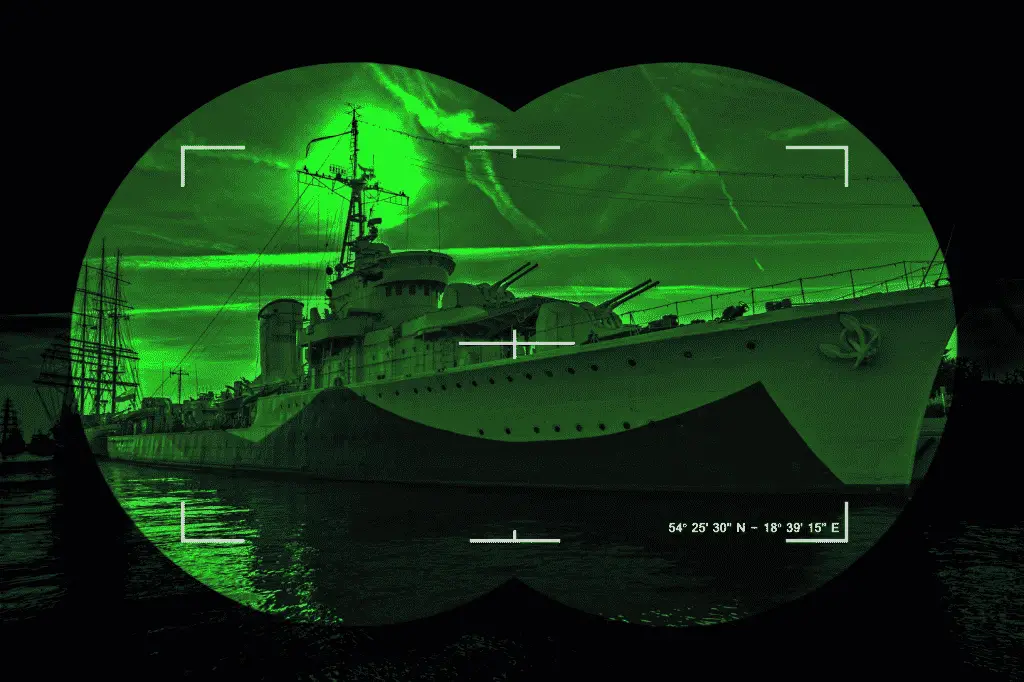
Green is the easiest color to see in the dark since it falls in the center of the visible light spectrum. It falls right in the middle so both the cones and rods will be used to interpret the color. The cones do half the work which preserves some of the night vision, and the rods do the heavy lifting sorting out clarity in dim light.
Of course this will lead to your night vision dropping a little bit once the lights go off, but it won’t be nearly as bad as with white or blue lights. You’re trading increased contrast and clarity for a slight reduction in night vision after shutting off the light.
That’s why the military uses a green display in night vision goggles. You get extreme detail while using the night vision goggles and you get about 75% of you normally would in the dark. It won’t take longer than a minute or two to bounce back after shutting off a green light, versus 20 minutes with white.
I have another post explaining when you should use a green flashlight if you’d like to find out more.
How Blue Light Effects Night Vision: Blue Lights Make Fluorescent Objects Glow
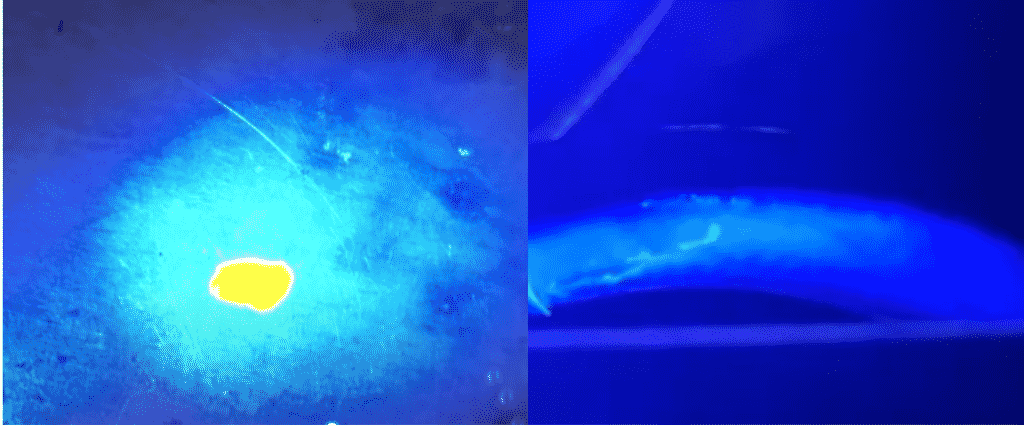
Blue and purple spectrum lights (aka black lights) are the worst option for preserving night vision. It’s better than a bright white light, but you’re solely using the rods in your eyes to interpret light. So your eyes will quickly constrict to the blue light and it will take a while for your eyes to adjust back to darkness (15-20 minutes).
Most people only use blue lights when they need to track or find something with fluorescent properties since they glow under blue/black lights. Any kind of blood, bodily fluid (urine, semen, sweat, body oils, etc.), mechanical fluids/oil, and some chemicals have fluorescent properties making them glow.
Hunters use blue lights to track blood trails, fisherman spotlight fish and lure them in, forensic teams analyze crime scenes, and engineers/mechanics find fluid leaks in machinery. You may want to check out my other post explaining when you should use a blue flashlight.
